Machine learning, broadly defined, is an application of Artificial Intelligence (AI) that teaches computers to think like humans. It works on data and studying patterns with minimum human intervention. This blog will help you understand what is Machine learning with examples, the different types of machine learning, its scope, and how you can make a difference in this area.

Let us first understand the meaning of Machine Learning. Primarily, we define machine learning as a sub-field of Artificial Intelligence. It allows applications to predict outcomes accurately based on the study of data and the use of algorithms. It helps the system to learn and improve on its own, based on previous experiences, without being explicitly programmed.There are many types of machine learning. Recommendation engines and Virtual assistants like Alexa and Siri are prominent machine learning applications. It is indispensable to the booming field of Artificial Intelligence.

Let us understand what is Machine Learning with examples.
Well, to answer the query- “What is Machine Learning with examples” let us look at some day-to-day scenarios. It has affected many facets of our daily life. From chatbots and predictive texts to language translation apps, social media posts, and the shows that Netflix suggests- Machine Learning is behind it all! Apart from this, it also powers autonomous vehicles and can diagnose medical conditions based on images. Nowadays, apart from adults, very young children use Alexa, Google, etc., to answer their queries.
Every time Alexa gets a query wrong, it becomes brighter by using that data to correct itself. Machine learning is the reason voice-activated user interface is improving rapidly.
Suppose a robot using machine learning is operated and bumps into a wall while travelling on a specific path. In the 4th attempt, this bot would likely automatically try to find an alternative route as it approaches the barrier. Thus, based on the outcome, it learns from its mistake and becomes better. In other words, the machine is learning.
So, now that we have learned what is machine learning with examples and have a better understanding of it let us dive deeper into its world.
Why are Enterprises investing in Machine Learning?
While the world of machine learning seems exciting with endless possibilities, what caught the enterprises’ interest? Well, enterprises are investing hugely in different types of Machine Learning.
Some of the top reasons for enterprises to invest in Machine Learning are:
- Ability to leverage data to uncover critical insights
- Subsequently, these insights help drive the decision-making process
- Moreover, the data gives enterprises an idea about consumer behavior and business operation patterns, which helps them build the right products.
Even established companies are utilizing various types of machine learning to increase efficiency and add value to their customer experience, from banking to retail to even bakeries.
Where is machine learning used?
Machine learning has become an indispensable part of the enterprise business cycle. It has become imperative for enterprises to be aware of what machine learning can do and understand its limitations. Indeed, the tremendous impact of machine learning on enterprises is remarkable. For many companies, it has become the competitive differentiator.
Apart from the fact that there are many types of machine learning, we use it in many applications, like the ones mentioned below.
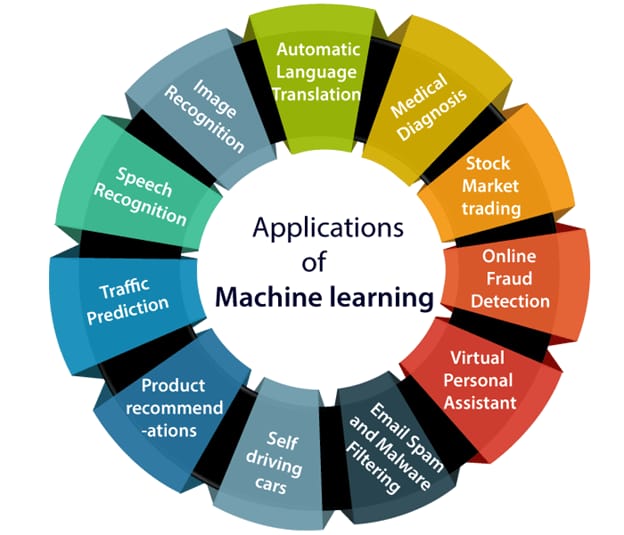
The recommendation engine that powers Facebook’s news feed is one of the popular examples of machine learning.
In addition to this, other prominent useless of machine learning are:
- Customer Relationship management
- Human Resource Information systems
- Virtual assistants
- Business Intelligence
How does machine learning work?
We have seen the various applications of machine learning, but how does machine learning work?
To understand how machine learning works, we need to realize that it is similar to how the human brain assimilates knowledge and gains an understanding. The machine learning process begins with data or observations, followed by identifying trends based on which it can make inferences.
The primary goal of machine learning is to allow computers to think independently without human intervention and to adapt their behavior accordingly.
What are the limitations of Machine Learning?
While machine learning helps enterprises in various facets of business across diverse sectors, it also has two significant disadvantages. They are:
- It can be costly – The Software infrastructure used is expensive, and the Engineers behind it command high salaries.
- Machine learning bias issue – When we exclude specific populations, or the algorithm contains errors, the model becomes biased. Thus, this leads the enterprise to make wrong decisions based on a biased model.

What are the types of Machine Learning?
Now that we have a basic understanding of what is machine learning and how machine learning works, let us look at different types of machine learning models.
In traditional programming, we have seen how we give specific instructions to the computer to follow. But machine learning is all about computers programming themselves based on their experiences. More importantly, we must remember that machine learning is rarely straightforward and iterative.
Typically, the 4 Machine Learning types are:
- Supervised Learning
- Semi-Supervised Learning
- Unsupervised Learning
- Reinforcement Learning
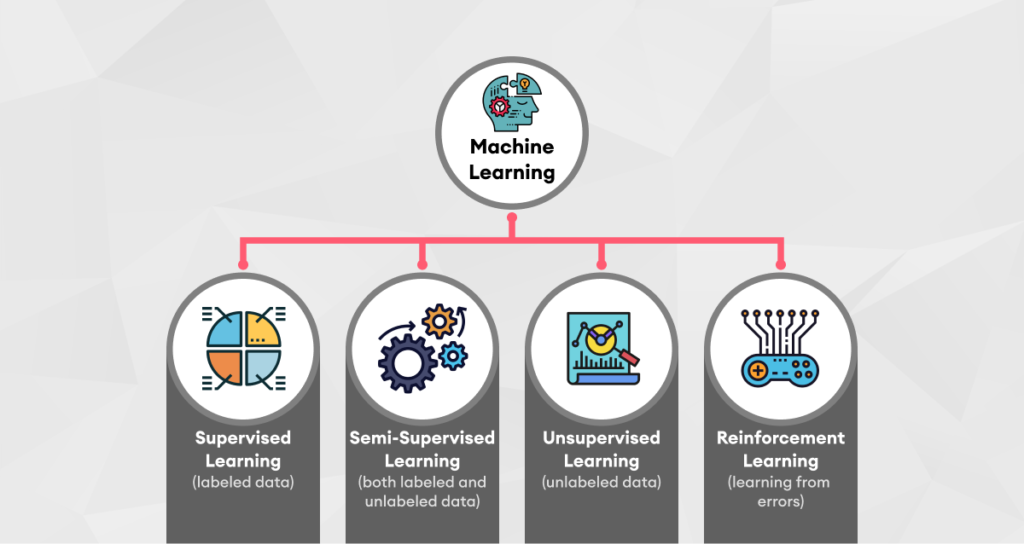
Most data scientists decide on the model based on the data that needs to be analyzed. Read further to learn about the types and their applications and limitations.
What is Supervised Learning?
Primarily, this machine learning model uses labeled datasets as inputs to train algorithms to classify and accurately predict data outcomes. In this case, the training set is used to get the desired output. For example, it helps in the prediction of Housing prices as well as Medical Imaging.
In the Housing prices case, the data consists of features and labels, which are analyzed to make accurate predictions of the housing prices. While in the second instance of Medical Image analysis, it can diagnose any disease. So we can give the proper treatment based on the available medical datasets and medical image applications.
It is the most common type of machine learning used today, which works well with data insights and improved automation.
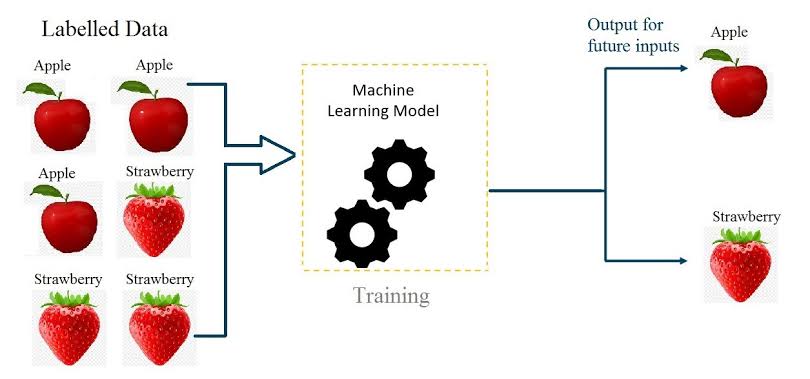
Areas of application are:
- Classification models – Binary and Multi-class classification
- Regression modeling – Predict continuous values
- Predictive Analytics – Predicting future outcomes based on the study of past trends
Current challenges:
Although supervised learning has the benefit of working with data insights and improved automation, the challenges faced are:
- The probability of human error is higher as people design the algorithms.
- The model needs top expertise to structure the input datasets to get accurate results.
- We need to do the data classification and cluster formation in supervised learning.
What is Semi-Supervised Learning(SSL)?
It is a versatile area between supervised and unsupervised learning. In this machine learning model, we label only a tiny part of the input data while most of the remaining datasets are unlabelled. So, it works like a hybrid technique between supervised and unsupervised learning to train a predictive model. Fraud detection is an exciting application of Semi-supervised machine learning. Instead of adding tags to the entire dataset, which is a time and cost-intensive method, we hand-label just a small part of the data. So, this partially trained model is now used to make predictions for the large ocean of unlabeled data.
Another interesting example is web content classification. It would take a massive team of human resources to add labels to classify web pages. Many search engines, like Google, apply SSL to find the content most relevant to the search query. The flexibility of SSL improves user experience by annotating web content and classifying it accordingly.
A few other notable areas of application are:
- Text classification – Helps to classify text based on the identified groups
- Image classification – Classification of the image into predefined categories
- Anomaly detection – To detect patterns or data observation points which differ from the normal
Challenges:
- It is only suitable for some types of learning problems.
- It poses a challenge for document classification and color-coded images.
- For complex problems, there are better options than semi-supervised learning.
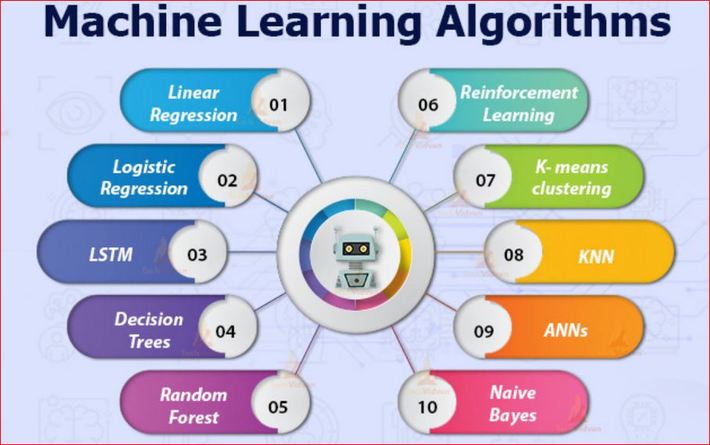
What is Unsupervised Learning?
Unsupervised machine learning uses algorithms that work on large volumes of Unlabeled data. It identifies patterns or trends that emerge from the data and are, more often than not, unexpected by people. Besides, the discovery of patterns by the model solves association problems and clustering issues. Some standard clustering algorithms are hierarchical,k-means, etc.
Further, it helps enterprises understand consumer preferences and thus design their marketing strategies according to the target audience’s preferences. For example, it aims to make the companies customer-centric by using techniques like customer segmentation, market basket analysis, etc. In both these cases, a set of labeled data does initial classification, and we further segregate the remaining unlabelled data on this basis.
Application areas for unsupervised learning are:
- Visualization – Use of diagrams, charts, graphs, etc., to communicate information
- Clustering – Process of grouping data into different clusters
- Dimensionality Reduction – A set of principled variables reduce random variables
- Finding Association Rules – Identifying the relation between various parameters
Limitations:
- It provides less accurate results
- It has limited areas of application.
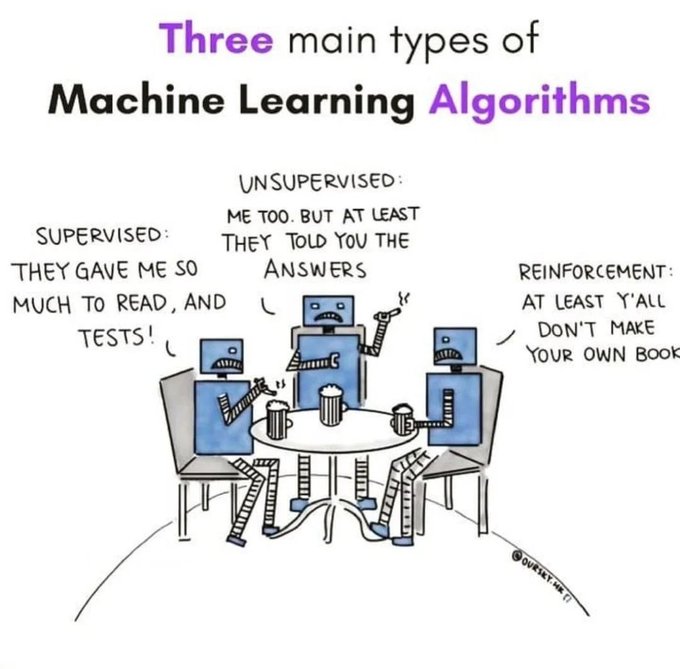
What is Reinforcement Learning?
Reinforcement Learning (RL) is based on the science of decision-making. It is a machine learning model to get the maximum reward in a situation by finding the optimal solution. This model has no training set available, so the algorithm learns from its own experience.
In this algorithm, once we enter the input, it gets rewarded if it performs an action whose result is beneficial to the end and gets punished if not.
One of the Adobe researchers proposed the RL-based algorithm, which displayed personalized recommendations for customers to maximize the customer lifetime value. Creating personalized offers that resulted in higher ROI became easy with optimizing customer lifetime value.
AlphaGo is a 3000-year-old, highly complicated Chinese board game. There is a possibility of 10^270 board combinations in this game. In 2016, the RL algorithm defeated the top AlphaGo. In the latest version, the AlphaGo agent is playing against itself to improve its game, and this is not humanly possible.
Practical Applications of Reinforcement Learning:
- Robotics – For industrial automation
- Resource Allocation – A training system developed to help enterprises allocate resources
- Autonomous Driving – Includes vehicle path planning and motion prediction
Limitations:
- The maintenance cost is very high
- Reinforcement Learning agent needs extensive experience
- Lack of interpretability as the decision-making reasons based on experience are not obvious.
How do we choose the suitable model?
So, now that you know the various machine learning models, how do we decide which approach works best for you? Well, the data you work on and the desired outcomes help to determine what model works best for you.
Choosing the best machine learning model to address a particular issue can take much time if not done carefully. Let’s follow some broad guidelines to select the suitable model for you.
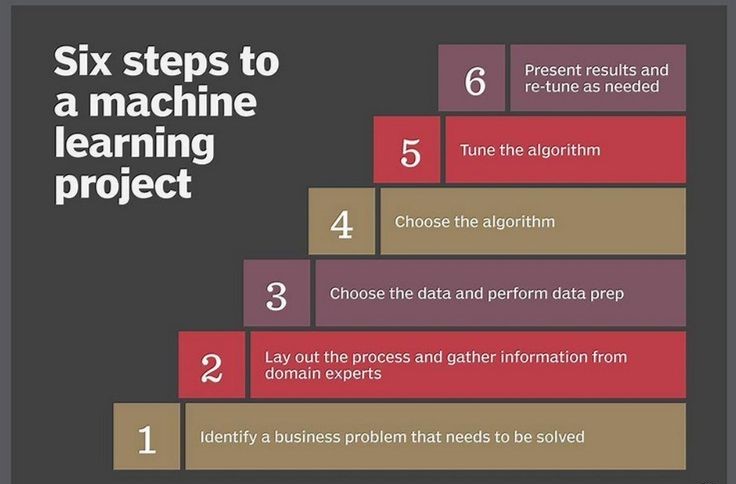
Step 1: At first, we identify the core problem. So, this step is crucial as we develop all other actions to solve this problem.
Step 2: Then, align the issue with potential data sources that are best for the solution. Experts, including data scientists with a thorough understanding of the issue, are needed for this step.
Step 3: Gather information, format it, and label it if necessary. In this case, data scientists assisted by data wranglers take the lead.
Step 4: After that, we select the algorithm(s) to employ and test them to determine how well they work. Again, Data scientists are typically the ones that complete this phase.
Step 5: The output is continuously fine-tuned until they reach the desired level of accuracy.
Step 6: Lastly, they present the results and conduct a detailed study to determine if you are near or far from the best solution for the problem stated in Step 1. Experts with a thorough understanding of the problem carry out this step along with data scientists. We then re-tune the algorithm as needed.
How can we start a career in Machine learning?
Are you looking to jumpstart your career in Machine learning? Though there are a plethora of options online, the machine learning course by Henry Harvin sets up apart from the rest. Furthermore, it has all the relevant training needed to embark on this exciting journey.
Henry Harvin
Rating: 9.8 /10

Henry Harvin, operational since 2013, is an online training and advisory services provider. It has trained 460,000+ individuals and has an impressive line-up of 600+ upskilling and reskilling training programs. Being an ISO 29990:2010 certified training vendor for 210+ corporates out of its 900+ corporate client base, it gives participants the right edge to perform better than their competitors. Moreover, it has a 300,000+ strong alumni base. In fact, Insight Success has ranked it as one of the Top 30 most trusted companies.
If you are aiming to be a skilled AI and ML expert, this course by Henry Harvin is for you.
Course Name: Machine Learning with R
Learning Benefits of the course:
- Live interactive sessions for 32 hours.
- Develop a core understanding of Web development and Coding needed for building websites.
- Gain much-needed knowledge of Python right from the fundamental to advanced levels.
- 5+ hands-on practical projects covering domains like HR, Sales, Marketing, Finance and Multi-domain.
- Apply knowledge gained to real-life applications for experiential learning
- Expand your knowledge of Computer Graphic skills.
- Understand cluster analysis and regression.
- Tools covered include R and R studio
Course Highlights:
- It equips you with the latest AI technology needed to master machine learning.
- Experienced professionals presently empaneled with Henry Harvin as domain experts train the participants.
- Tailor-made course with the right tools to upskill or reskill your existing competencies in Machine Learning.
- Earn a highly rewarding certificate as a Machine Learner using R on course completion.
- Become Alumni of the Elite AI & Machine Learning Academy
- 1 Year Gold membership to the Henry Harvin AI & Machine Learning Academy
- Guaranteed internship opportunity
Course Fees:
Rs.15000
Mode of instruction:
Online as well as in branches across various locations.
Similar courses offered:
Future scope of Machine Learning
Machine learning is gaining traction everywhere. Whether improving sales, marketing, productivity, customer satisfaction, or business profit- almost all industries are implementing machine learning.
As the prominence of Artificial Intelligence increases, the popularity of Machine Learning increases as well. Most of the major enterprises like Google, Microsoft, IBM, Amazon, and others are in a race to onboard machine learning which currently enjoys the most competitive spot in the Enterprise realm today.
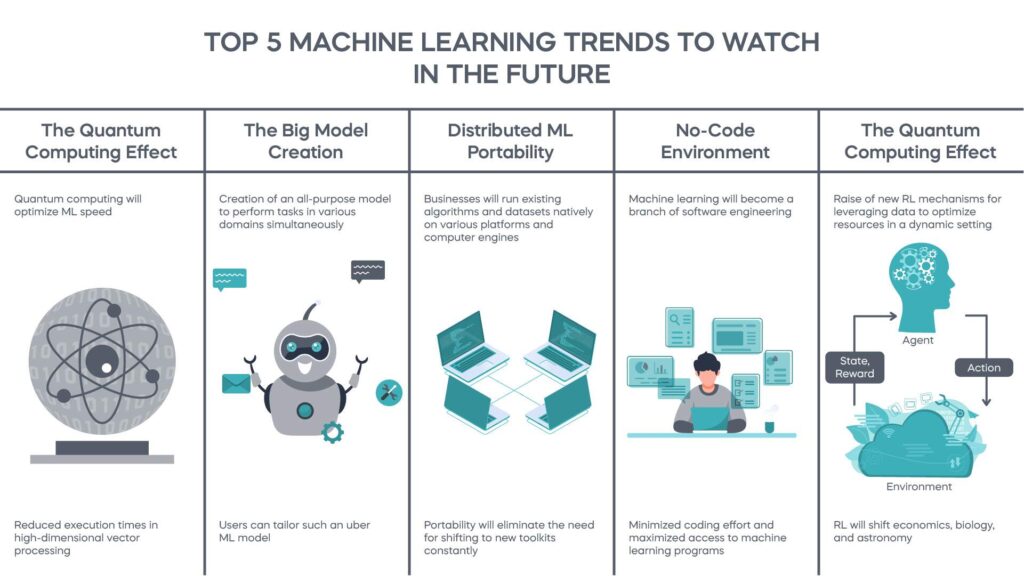
Platform services like data collection, preparation, and classification along with model building, training, and application deployment, are at the forefront of technology right now. This has led to increased interest in many IT professionals and new graduates to look at machine learning as a lucrative career option.
In the future, the machine learning platform wars will intensify owing to the growing importance of machine learning in the most likely scenario of, the Robot-dominated AI world of the future.
Recommended Reading
- A tutorials for beginners in Machine Learning
- Top 20 machine learning books
- Standard machine learning case studies in IT operations
- Top 10 Machine Learning courses in India
- The ultimate guide to machine learning embedding
Conclusion
Machine learning plays a direct or indirect role in our daily lives. Although machine learning is an emerging field, it is constantly evolving. Various machine language applications will be used to survive in the future technological world. As a machine language engineer, you will be responsible for the testing and training of the algorithms to ensure the accuracy of the results increases.
The future belongs to those who can leverage Machine Learning to their benefit, as it is the Fourth Revolution.










![Harvin Harvin Education Reviews: 2023 [Updated]](https://bestcoursenews.com/wp-content/uploads/2023/01/download-28-100x70.jpeg)


